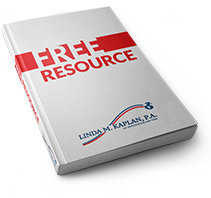For those who were not lucky enough to be born a U.S. citizen, one must first obtain permanent resident status (aka “green card”) before applying for U.S. citizenship.
Permanent resident status may be obtained through an employment based petition or a family based petition. Generally speaking, the permanent residence card is issued for 10 years and can be easily renewed for additional 10 year periods assuming the “green card” holder has not been convicted of a serious crime or lost their resident status by failure to maintain continuous residence in the U.S.
Many people never need to renew the first permanent residence card which was issued for 10 years because they may qualify to file for naturalization after 5 years of permanent resident status.
A bona fide marriage to a U.S. citizen is one of the quickest ways to obtain permanent resident status, and for those who entered the U.S. and overstayed their authorized visit, it may be the only way. An additional benefit of obtaining permanent residence status through marriage to a U.S. citizen is that you may apply for naturalization after 3 years instead of the usual 5 years. This assumes that you remain married to the U.S. citizen when you apply for naturalization.
Because obtaining resident status through marriage to a U.S. citizen is sometimes the only way to accomplish this desired status, and because citizenship can be obtained more quickly via marriage to a U.S. citizen, there is a strong impetus to marry just for the “green card.” One of the tools used by immigration to combat marriage fraud is to issue the residence card for only 2 years instead of the usual 10 years. A person who has been married for less than 2 years at the time of the immigrant interview is given a “Conditional” Permanent Resident status for 2 years.
When immigration conducts the initial immigrant interview based on marriage, the couple is required to appear with the normal documents required for all other family based petitions – birth certificates, marriage certificates, passports, medical exams, etc. The intending immigrant must also have passed an extensive background check after having been fingerprinted. Those who seek residence based on marriage to a U.S. citizen face additional scrutiny – they must prove to the officer conducting the interview that this is a “bona fide” marriage – not one entered into strictly for the residence status.
Many of you may have seen the movie “Greencard” in which a Frenchman needs a green card to stay in the U.S. and a U.S. citizen woman needs a husband to rent a desirable Manhattan apartment. They go through the fiction of a marriage ceremony and must then convince the immigration service that this is a real marriage. The movie shows them memorizing answers to questions like how they met, what his mother’s birthday is, etc. The interview shown in the movie is quite extensive as marriage interviews can be.
In a typical immigration marriage interview, the immigration officer will first ask for documentation of the marriage before deciding whether to conduct an extensive interview. If the officer is not satisfied with the documentation and the normally short interview of the couple, the officer will schedule a second interview so as to have time to conduct a thorough interview and perhaps an investigation. To avoid the need for a second interview, the couple should bring as much documentation of the marriage as available. I often need to push my clients to provide more documentation. They know that their marriage is real and think that they should have no problem, but do not understand that immigration starts out with the attitude that they must prove it. In preparing the documentation for a marriage interview, I tell my clients that it is better for them to bring extensive documentation and for the officer to tell them “this is enough” than to have the officer ask “what else do you have?”
Even when the marriage interview goes well and the resident status is approved, it will only be granted as “conditional” permanent residence for 2 years if the couple has been married less than 2 years on the date of approval. The immigrant, joined by his/her spouse, must file a “Petition to Remove the Conditions” in the 90 days before the 2-year conditional residence expires. This cannot be filed 91 days in advance and there is a risk of denial if filed after the conditional status expires.
When the petition for conditional status is filed, the couple must again provide documentation of the marriage. The documentation needed for the Petition to Remove Conditions is the same type of documentation used for the initial marriage interview. We would include tax returns, financial records, leases and/or deeds, photographs of family events and vacations, birth certificates of children born to the marriage, etc. This documentation should be dated during the 2-year period after the initial marriage interview. One of my clients once provided a copy of a purchase agreement for joint burial plots. The officer found this to be interesting and persuasive. Once this Petition to Remove the Conditions is properly filed, Immigration has three choices – they can deny the petition, require another interview (which delays the adjudication), or approve the petition without an interview. Obviously the preferred choice is a well-documented petition that is approved without the need for a second interview.
Assuming the Petition to Remove the Conditions is approved, the immigrant spouse may apply for U.S. citizenship 3 years after the approval of the initial “Conditional” Permanent Residence.
The office of Linda M Kaplan, PA is available to represent you and your spouse in the initial filing of a residence application based on marriage to a U.S. citizen, as well as the Petition to Remove the Conditions.
- Refugees, Asylum, and other humanitarian relief. - February 9, 2024
- Florida Anti-Immigrant Legislation - May 30, 2023
- Undocumented Immigrants Pay Taxes—Even Income Taxes. - April 25, 2023


